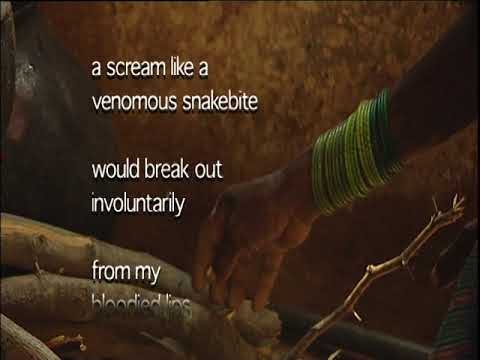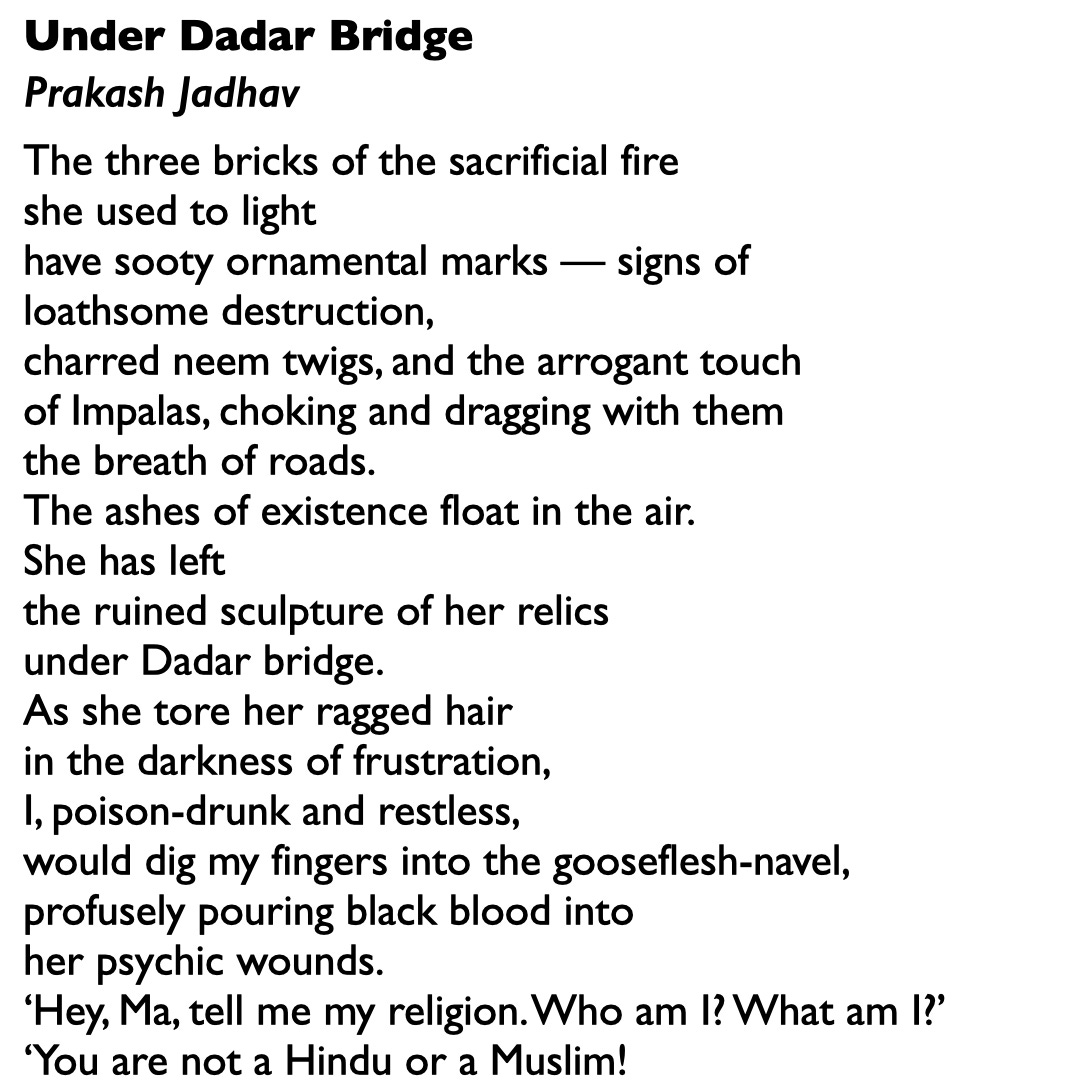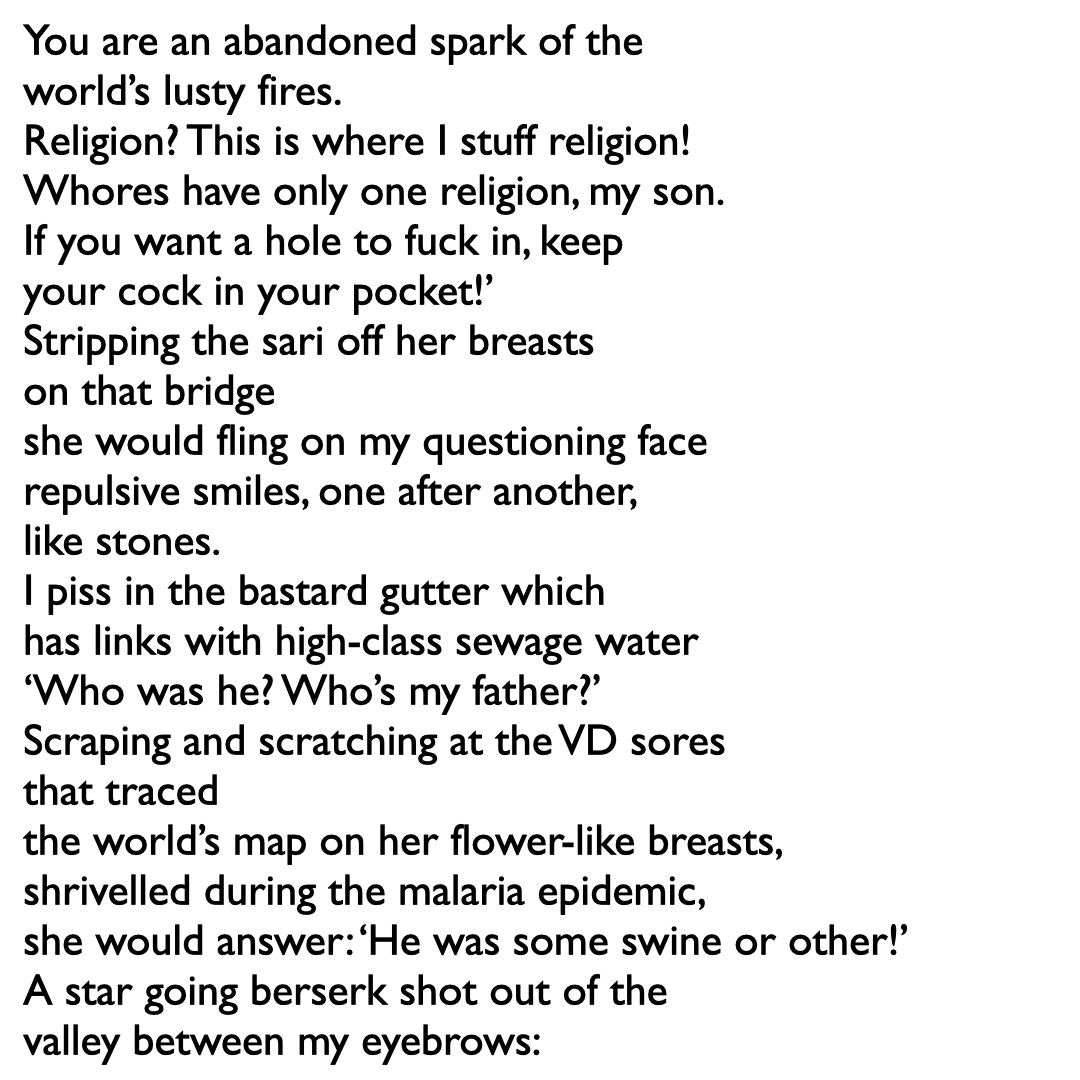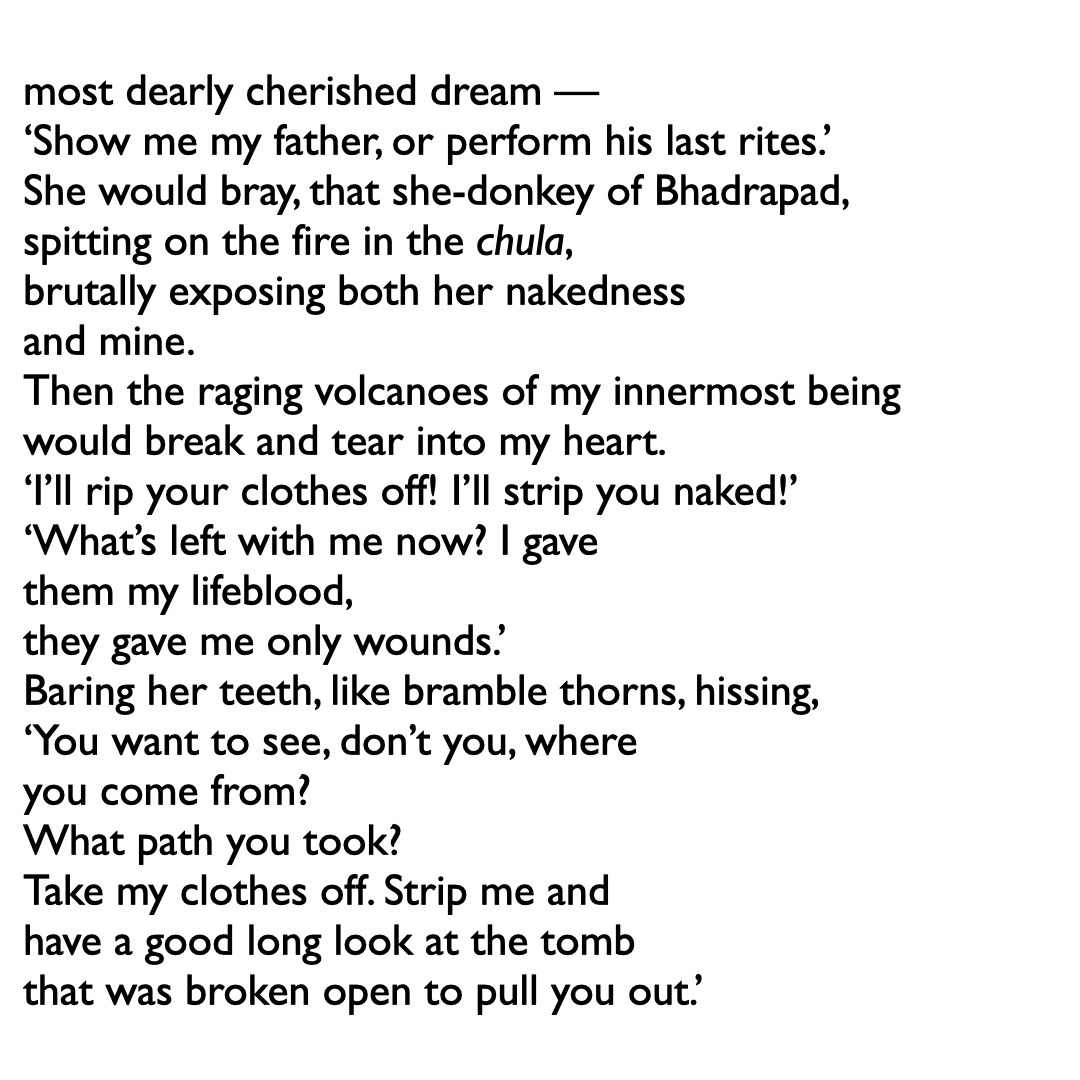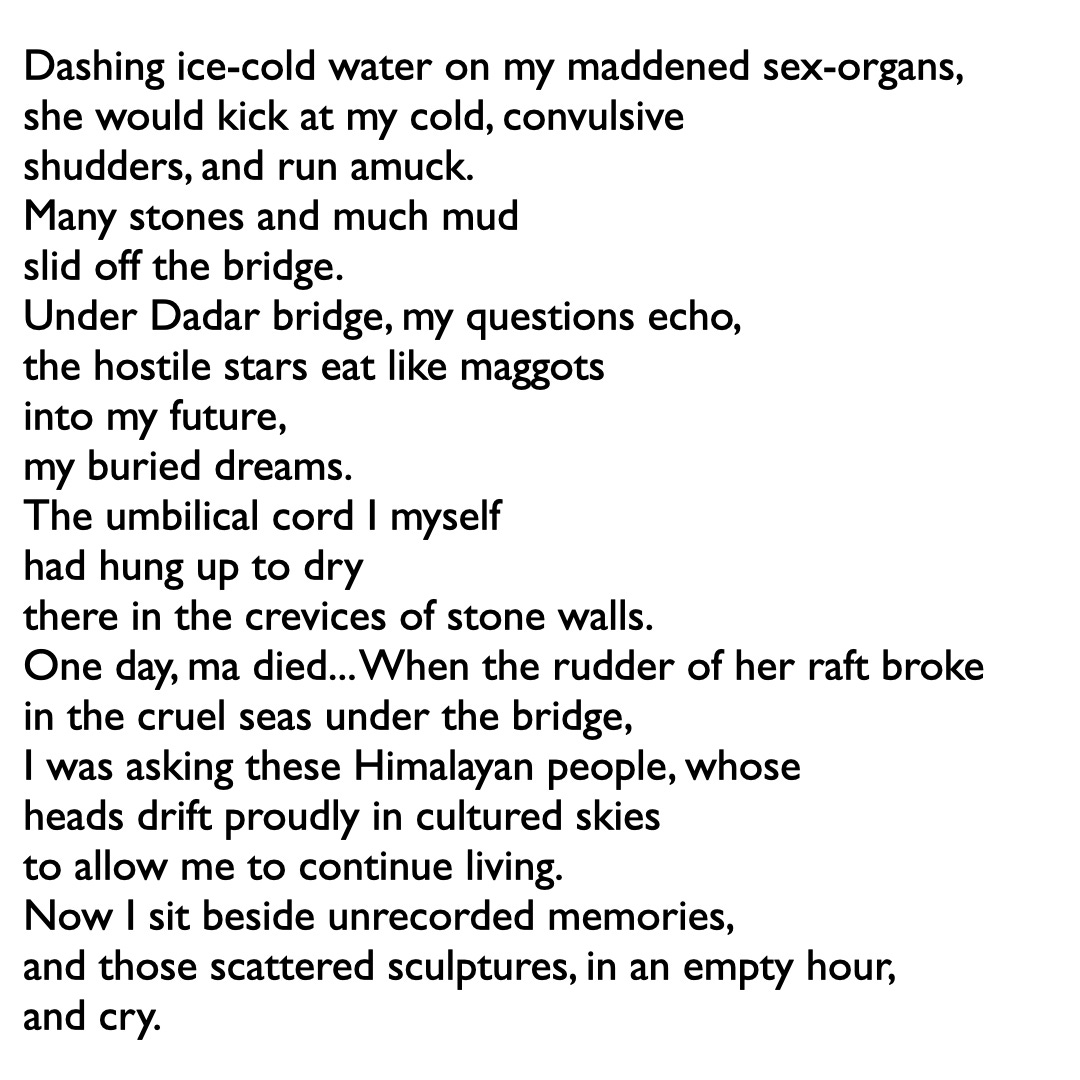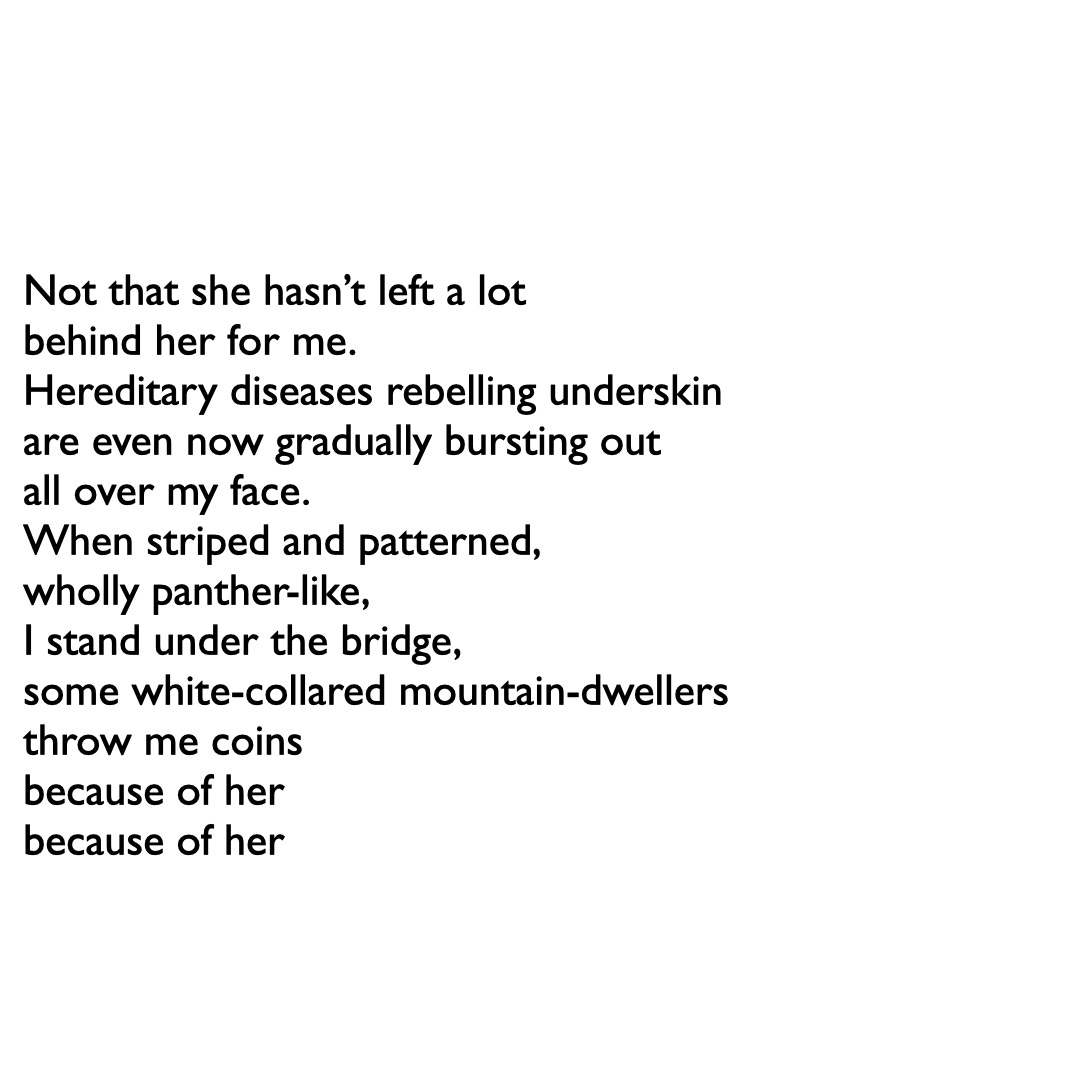Apologies, dear reader, I wanted to share this earlier, but I had been busy with some work the past few days; work that allows me to continue to give time to Poetly. I started writing this on Ambedkar Jayanthi, but had to adjourn.
That evening, as I felt the full rush of love and respect that Ambedkar was being showered with, through all the poignant posts from fierce warriors and companions from the movement, my mind kept going back to a friend I’d made at Chaitya Bhoomi (Dadar). It is one of my favourite quiet spots, in Bombay, the place where Ambedkar’s body lies. I remember going there since my college days, to get away from the noise of the city, and to remember, again, the great work of Ambedkar - this messiah for the Dalits. No person who had met his life’s work could ever be the same again, and when I went there, I felt this quiet energy. I remember being astounded by the crowd on 6th December, the first time I went there. People from all parts of Maharashtra, sometimes even out of the state, had come to pay their respects. I understood then, the current of love, and the current of blood that tied the downtrodden to Ambedkar.
Many would tell me that day “We are here, because he was” (“Tho hota mhanoon aami aahe”). I understood, that day, the meaning of pilgrimage, and also the spirit that drove people to prayer. Families had turned up with nothing but the clothes on their back, trusting in the love for Babasaheb that the others in their community had.
I met a young fellow, one evening on one of my visits to Chaitya Bhoomi - Achintya. He sat at the stall at the end in those days (this must have been in 2009-10). He was a sculptor who made the most exquisite clay Ambedkar figurines. We got to talking and he showed me some of his sculptural work inside, in the back room, the pieces that weren’t for sale. I told him that I was a student of music and I remember his eyes lighting up that first full moon night he played for me. He was about my age, fresh out of college. He said “Wait” and went to a side room, and he returned with a flute in his hand. As the moon dipped its fingers in the Arabian sea that night, we spoke in the sombre rishabh of Maarva. The music breathed along with the waves, and between the notes he told me what Ambedkar meant to him. He talked of his childhood in Nashik, and how he had moved to Bombay. He spoke of his community, as a student of Hari Prasad Chaurasiya, but I understood then, that even while they were outwardly welcoming, he felt conscious of being a Dalit. He said he wanted to do a lot more, to practice music, and to learn sculpture, but also that he didn’t mind making Ambedkar and Buddha figurines and busts all his life. We met many times, and he always told me, that if I were coming for the 6th December event, I should call him, and that he would do “setting” and make sure that I didn’t have to stand in a long queue like everybody else. Even there, my privilege remained. I have not been able to go back to Chaitya Bhoomi in the pandemic years, but friends have shared images of the swanky new deck area that has been constructed there.
The first time I met him he gave me a small buddha figurine set against a peepal leaf that leant to one side, to give to the friend who was with me. He gave me another little glass buddha that refracted light, and he refused to take money from me for that. He told me to meet him when I would return to Bombay next, so that we could play some more alaap. I lost his number in an old phone. But I am sure I will meet him again soon, and I hope he is fine, and has survived through the difficult pandemic.
***
On that day, I also remembered Khairlanji, and the atrocities committed against Dalits there. Some lines from Pradnya Pawar’s searing poem, Love in the Times of Khairlanji, come to mind.
“Pash said:
“The most dangerous is
the dying of our dreams.”Is this a lie, Bhima,
that I speak your name?
In that moment
innumerable lotuses bloom
skin smooth as marbleIs this a lie
that I speak your name?
History comes alive
like menstruation.In the global market
my grandmother sits, selling
scythe and sickle
bundles of grass
a chisel tongue
and language, a sharp weaponHow large is her hunger
and how long has she been thirsty
craving for a bhakri
I have never seen her.She wanted to be human.”
-From Pradnya Daya Pawar’s “Love in the Times of Khairlanji”
The tradition of the angry poet tearing apart the fabric of upper-caste dominion started to coalesce into a chorus around the 50s and 60s. It is sometimes difficult, with English, to reach the raw texture of Marathi that these poets used as they walked a path of defiance. This poetry of anger emerged within a context of deep oppression, and the disruptive politics that found its watershed in the figure of Ambedkar. As Pawar’s strident voice recounting the atrocity at Khairlanji points out, this a story that has been repeatedly suppressed. Pawar’s poem (artfully translated by Chayanika Shah and Shals Mahajan, and showcased on Poetry at Sangam) unravels a blemished reality. It embraces both the smouldering rhetoric that came to characterise this mould of Dalit literature, and the dark humour that unseated the popular imagination of upper caste hegemonic practices.
Another prominent work that uses this idiom is featured in the documentary by Amar Kanwar, Night of Prophecy. An attempt to reimagine the very idea of the nation through its faultlines, the film uses only the music and poetry of resistance, in its tracing of multiple ruptures across the map of India. I have shared Goretti Venkanna’s powerful song from that film before. I share, today, (a little late) another popular Marathi poem featured in that film.
I have heard Prakash Jadhav’s poem many times in Bombay, during readings and protest rallies. In the film the poem is recited as the camera hovers over the figure of Jadhav, and then oscillates between the body of the poem rendered in various city relics, and Dadar bridge at night. I’d recommend that you watch the poem being recited in the poet’s voice, if you haven’t, in Kanwar’s film. While it is in Marathi, an English translation (by Shanta Gokhale and Nissim Ezekiel) scrolls on one side of the screen. You should watch the entire film, but this poem starts at around 7:10 in the film.
The English translation of this poem, from Arjun Dangle’s Poisoned Bread, has been shared below in its entirety.
Jai Bhim!
If the poetry and the commentary resonate with you, do consider ‘buying me a coffee’.
(Matlab, if you can’t, that’s also fine, obviously. This will always be a free newsletter)
—
Note: Those, not in India, who’d like to support the work I do at Poetly, do write to me - poetly@pm.me. (Apologies, I will figure out international payments soon)
If you wanna share this post with a loved one…
Thanks for reading Poetly! Do subscribe if you are not reading this in your inbox. Cheers!

